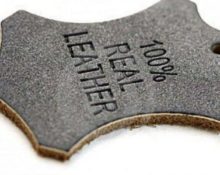Leather and suede are currently the most popular materials for making shoes almost all over the world. Both have their own positive and negative qualities, and in connection with this, their fans and opponents. And it’s not just about the appearance and texture to the touch, although this matters, but their performance qualities are also compared, and every time in a dispute, one side wins, then the other, without coming to a compromise. What are the fundamental differences between these materials, and what criteria should you use to choose what to update your wardrobe with this time?
Benefits of suede boots

Suede boots in one variety or another have not left fashion shows for decades and are unlikely to do so in the near future. Suede suits almost any style and has an expensive and luxurious appearance, but there is a downside: considerable effort must be put into maintaining this look in its original condition.
If you don’t want to end up with shoes in a condition unsuitable for walking after just a week of wear, you’ll have to invest additionally in special care products, as well as carefully avoid snow and puddles and forget about walking in the rain or snow.
However, suede boots have other advantages besides their aesthetic appearance. They are much warmer than leather, and in combination with natural fur they turn into one of the warmest types of winter shoes. In addition, they are much softer than leather counterparts, take the shape of the foot faster and more accurately, and therefore are often much more comfortable. A big plus for comfort is the breathability of suede, which saves from leg fatigue.
Leather boots: pros and features

Leather boots are a classic that, like suede, will never go out of style, so in this regard they are on par. Shoes made of genuine leather look no less aesthetically pleasing and expensive, so in this sense it is only a matter of taste.
And although leather products also require care, it is not half as much as the effort required for suede. Among the advantages:
- durable,
- are moisture resistant;
- durable.
Genuine leather, like suede, can stretch and adapt to the shape of the foot, however, this takes more time and there is a high risk of purchasing a fake.
There is a negative side associated with this: there is a danger of not distinguishing leather from leatherette and buying boots that don’t wear well and practically do not allow air to pass through, which makes your legs significantly tired.
Reference! Natural materials can also have poor breathability, so pay attention to the type of leather.
Which boots are better: suede or leather?

As you may have noticed, each material has its pros and cons, so it is not possible to objectively answer this question. All that remains is the subjective factor, and the only way to get it is to try both types of shoes and compare the sensations yourself.


 0
0





